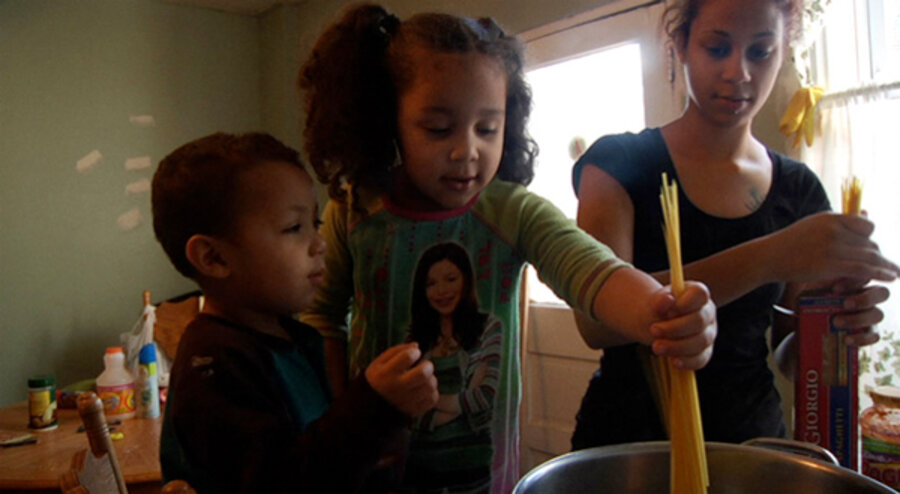'A Place at the Table' makes a persuasive case for why millions are going without food
Loading...
In a country with an overabundance of food, why are there an estimated 49 million Americans who do not know where their next meal is coming from? “A Place at the Table,” a documentary directed by Kristi Jacobson and Lori Silverbush, seeks answers by going directly to the people involved – Washington lawmakers, authors, economists, and, above all, the people who are hurting.
We first meet Rosie, a grade-schooler in rural Colorado whose family of seven, because its income exceeds the annual limit of $28,000 per family of four, doesn’t qualify for food stamps. Her teacher is at first perplexed as to why she is so unresponsive in class until the obvious hits home: Although Rosie does not appear markedly malnourished, she is chronically hungry.
The film makes the point that in America we don’t think a child is severely hungry unless he or she looks like a skin-and-bones sub-Saharan sufferer. But all body types can qualify. In fact, as Raj Patel, the author of “Stuffed & Starved,” says, hunger and obesity, so often founded on cheap carbohydrates, are closely linked. “They are both signs of insufficient foods you need to be healthy.” (A staggering statistic: By one estimate, 1 in 3 children born in America in the year 2000 will develop Type 2 diabetes.)
Many of the hungry are too proud to talk about it. A Colorado policeman, whose job can’t fully support him, describes his experience procuring necessities at a food bank. Rosie’s mother, who waitresses, can’t afford vegetables for her family.
The filmmakers make a persuasive case that the lack of availability of fruits and vegetables in these “food desert” communities is a direct result of corporate greed. Why incur the cost of shipping these nutritious, perishable foodstuffs to outlying regions when you can maximize your profits selling to the big chains?
Nearly $20 billion in corporate farm subsidies are awarded by the US Department of Agriculture annually, of which 70 percent goes to the largest and most centralized farms – the ones with the most clout and the ones that, thanks to cheap subsidies, produce the corn, soybeans, and wheat that underlie so much of the junk food we eat. Much of this argument was elaborated in an earlier documentary, “Food, Inc.,” also a production of Participant Media.
In addition, “A Place at the Table” attempts to provide an overview of the history of hunger in America. The survey is simplistic and scattershot: We are told that farm subsidies came about in response to the Great Depression; that the 1968 CBS documentary “Hunger in America” put the crisis on the map; and that by the late 1970s, with the introduction of food stamps and the school lunch program, hunger in American had been “virtually eradicated.”
Then came the big bad ’80s and hunger returned with a vengeance. The culprits: tax cuts, the rise of corporate welfare for agribusiness, the decline in social programs, and the rampant belief that the hungry did this to themselves – and that the churches and the charities and the genius of the free market system could right these wrongs.
Obviously the situation is far more complex than this précis suggests. (Anybody who thinks hunger in America was “virtually eradicated by the late ’70s” wasn’t looking very hard.) And yet the central thesis holds. As actor Jeff Bridges, who is interviewed extensively in the film, says, “We don’t fund our Department of Defense through charity.” Bridges, who has been active since at least the early ’80s in the anti-hunger movement, is the national chairman of the Share Our Strength/No Kid Hungry campaign. He gives a good name to celebrity activism.
“If another country was doing this to our kids, we’d be at war,” he says. For those who do not respond to the moral arguments for ending hunger through greater governmental involvement, he also echoes the sentiments of so many other commentators in this film: A malnourished population is a security risk. “It’s about patriotism,” he says. One thing is clear from “A Place at the Table”: You cannot answer the question “Why are people hungry?,” without also asking “Why are people poor?” Grade: B+ (Rated PG for thematic elements and brief mild language.)







